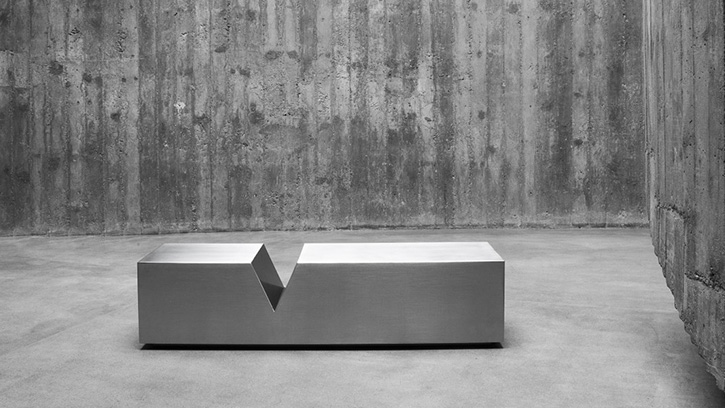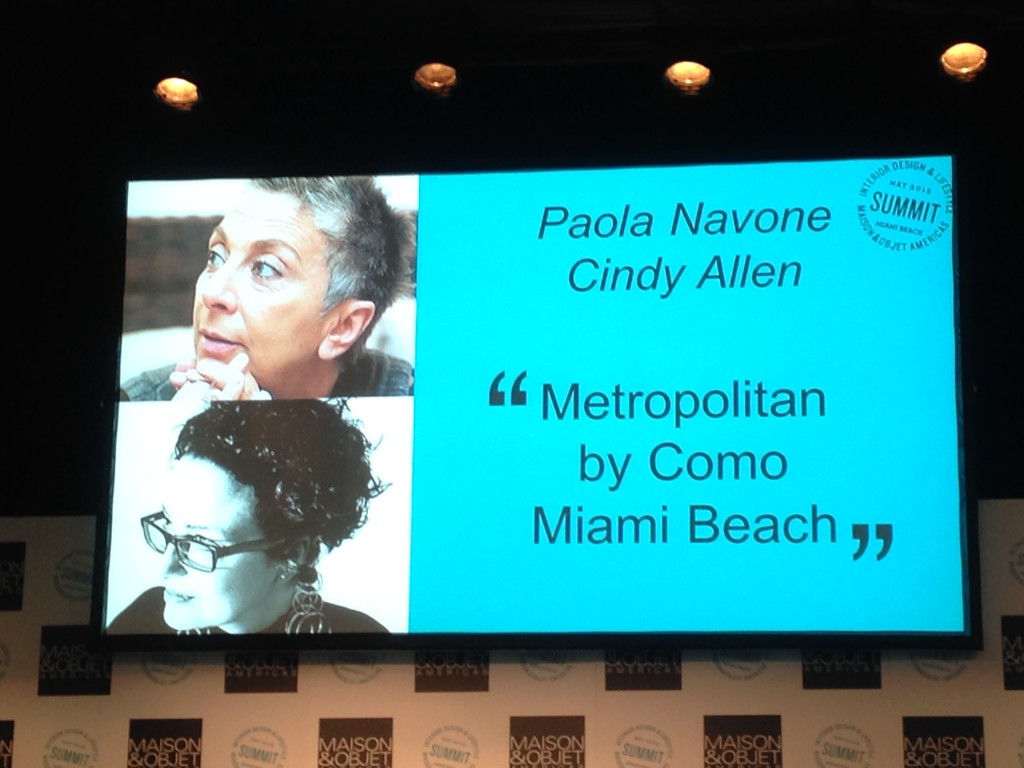When did I visit Milan again? Oh yeah, April 2014. Time flies. You see the thing is, when you go to these sensory overloading mind boggling trade shows you bring it all home with you in the form of dvds, thumb drives, brochures, samples etc.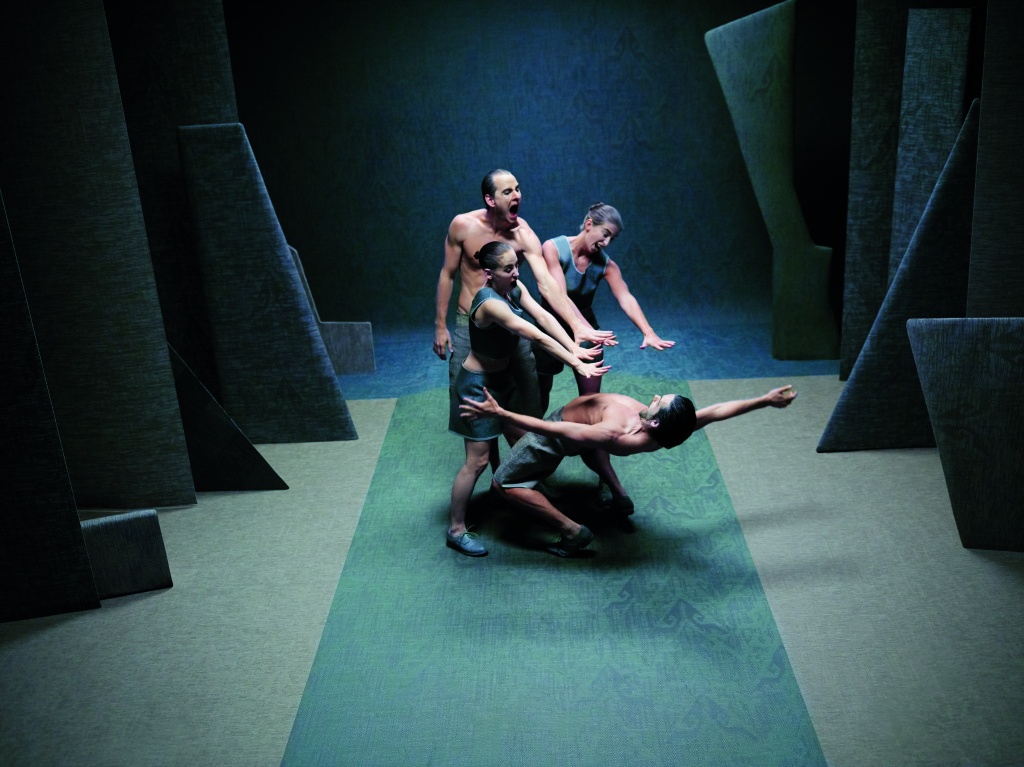 The problem is when you get home it’s so busy all these bits end up sitting in a "some day" drawer. Well guess what? Today’s the day.
The problem is when you get home it’s so busy all these bits end up sitting in a "some day" drawer. Well guess what? Today’s the day. Back to Milan. I was there as a member of the Blanco Design Council (a fact that I am most proud of and grateful for) to attend the Salone di Mobile, the premiere European interior design and furniture trade show. Fast forward to today when I decided to fire up a thumb drive called Bolon. Let me tell you about it.
Back to Milan. I was there as a member of the Blanco Design Council (a fact that I am most proud of and grateful for) to attend the Salone di Mobile, the premiere European interior design and furniture trade show. Fast forward to today when I decided to fire up a thumb drive called Bolon. Let me tell you about it.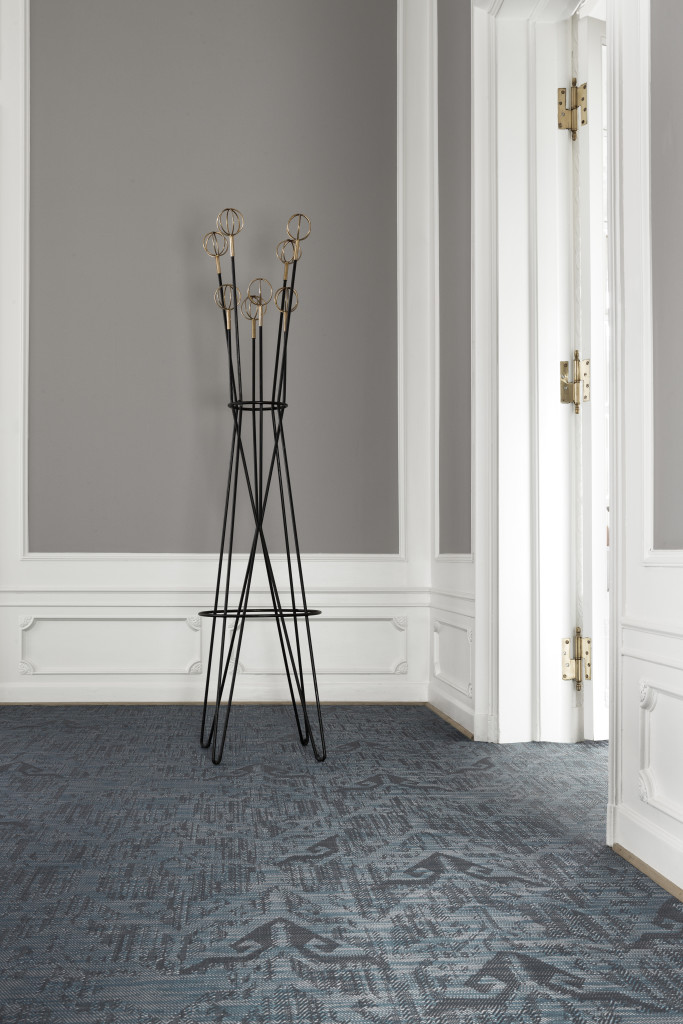 Bolon is a Swedish flooring manufacturer but there is so much more to it! The concept of fashion has a way of elevating even the most mundane of objects. That’s what’s so intriguing about Bolon, started in Stockholm in 1949 by Nils-Erik Eklund. He became a pioneer of the “green” movement when he decided he would make woven rag rug flooring from the waste product of other flooring manufacturers. The business succeeded, was passed on and has been run by his granddaughters Annica and Marie Eklund since 2003. That’s when fashion entered the picture. The term “floored by fashion” was coined and fashion icon Giorgio Armani decided he loved the product enough to use it in his shops, his home and on his yacht. Savvy marketing by this latest generation of Eklands seals the deal. You must admit this video, introducing their Silence line, is intriguing enough to make you want to know what this product is all about!It’s an original type of flooring that I would describe as woven vinyl with a backing. It can look natural or not, doesn’t seem particularly comfy on the bare foot but does appear to be bullet-proof, a definite plus for commercial spaces which is the main application.Today the focus is on global expansion and achieving a totally green product. Bolon’s list of clients includes not only Armani but also Google, Mercedes, Adidas, Reebok and Sheraton as well as leading architects and designers. All design and production happens in Ulricehamn, Sweden.
Bolon is a Swedish flooring manufacturer but there is so much more to it! The concept of fashion has a way of elevating even the most mundane of objects. That’s what’s so intriguing about Bolon, started in Stockholm in 1949 by Nils-Erik Eklund. He became a pioneer of the “green” movement when he decided he would make woven rag rug flooring from the waste product of other flooring manufacturers. The business succeeded, was passed on and has been run by his granddaughters Annica and Marie Eklund since 2003. That’s when fashion entered the picture. The term “floored by fashion” was coined and fashion icon Giorgio Armani decided he loved the product enough to use it in his shops, his home and on his yacht. Savvy marketing by this latest generation of Eklands seals the deal. You must admit this video, introducing their Silence line, is intriguing enough to make you want to know what this product is all about!It’s an original type of flooring that I would describe as woven vinyl with a backing. It can look natural or not, doesn’t seem particularly comfy on the bare foot but does appear to be bullet-proof, a definite plus for commercial spaces which is the main application.Today the focus is on global expansion and achieving a totally green product. Bolon’s list of clients includes not only Armani but also Google, Mercedes, Adidas, Reebok and Sheraton as well as leading architects and designers. All design and production happens in Ulricehamn, Sweden. 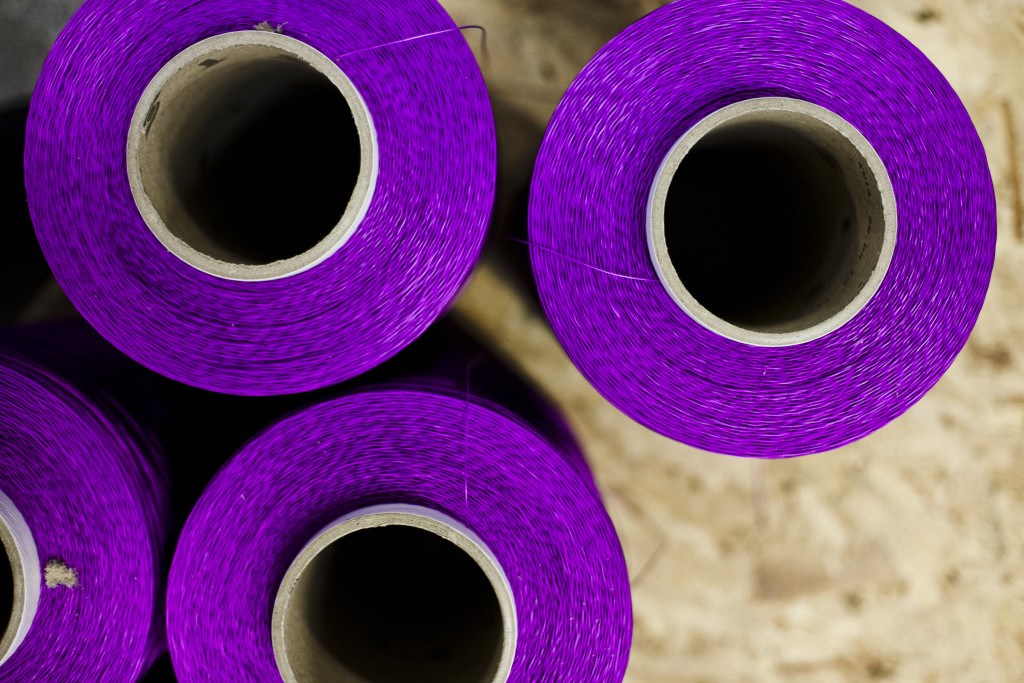 Today the focus is on global expansion and achieving a totally green product. Bolon’s list of clients includes not only Armani but also Google, Mercedes, Adidas, Reebok and Sheraton as well as leading architects and designers. All design and production happens in Ulricehamn, Sweden.
Today the focus is on global expansion and achieving a totally green product. Bolon’s list of clients includes not only Armani but also Google, Mercedes, Adidas, Reebok and Sheraton as well as leading architects and designers. All design and production happens in Ulricehamn, Sweden.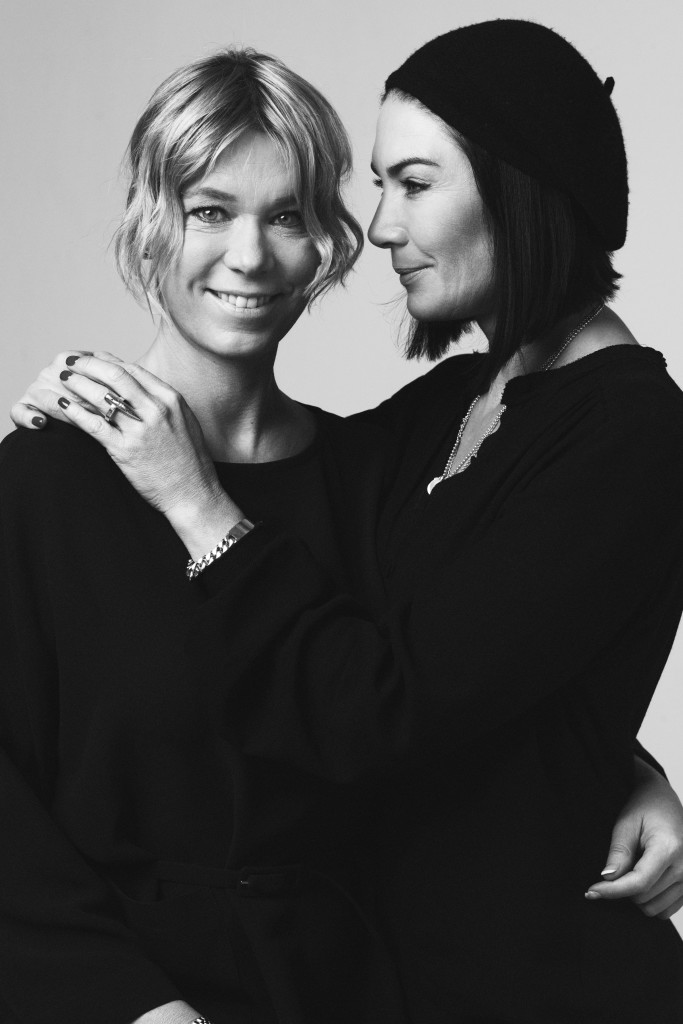 Bolon is available in rolls or tiles. You can vacuum it or for deep cleaning it can be scrubbed with a brush and an all purpose cleaner (there are machines that can do this too). Lastly vacuum again with a wet vac. If you want to delve into the specifics you can do that here. Interesting diversion, yes? Who knows what I'll unearth next! Stay tuned...
Bolon is available in rolls or tiles. You can vacuum it or for deep cleaning it can be scrubbed with a brush and an all purpose cleaner (there are machines that can do this too). Lastly vacuum again with a wet vac. If you want to delve into the specifics you can do that here. Interesting diversion, yes? Who knows what I'll unearth next! Stay tuned...
Bake to the Future with A Smart Oven
Appliances of yesteryear barely resemble those that we take for granted today. We have ovens that can remember how to cook our favorite recipes and even refrigerators that send messages to an of state location to report a malfunction! Here's how it works. Say you're away and your fridge goes kaput. Said fridge sends a report to headquarters who in turn follow up with a phone call to let you know and to schedule a service call. I was amazed when I heard that a year or so ago at a Miele appliance demo. Miele calls it "Remote Vision". Sounds a bit creepy but smart creepy, no? The "smart" function is beginning to infiltrate most appliances but today I want to talk about ovens.
Here's how it works. Say you're away and your fridge goes kaput. Said fridge sends a report to headquarters who in turn follow up with a phone call to let you know and to schedule a service call. I was amazed when I heard that a year or so ago at a Miele appliance demo. Miele calls it "Remote Vision". Sounds a bit creepy but smart creepy, no? The "smart" function is beginning to infiltrate most appliances but today I want to talk about ovens. Yesterday Tech Crunch announced the unveiling of a new counter top “smart oven” by June, a teeny tiny company based in San Fransisco. The new June oven features precision, intuitive function and modern convenience all in something that resembles a toaster oven. It has a built-in ability to identify and even weigh food to suggest cooking methods and utilizes convection technology and carbon fiber heating elements . It also allows you to monitor your steaks with your smart phone. There's more, you can check it out here, but it still looks like a toaster oven. It fits a dish as big as 11" by 16", so maybe a little bigger than toaster oven capacity.
Yesterday Tech Crunch announced the unveiling of a new counter top “smart oven” by June, a teeny tiny company based in San Fransisco. The new June oven features precision, intuitive function and modern convenience all in something that resembles a toaster oven. It has a built-in ability to identify and even weigh food to suggest cooking methods and utilizes convection technology and carbon fiber heating elements . It also allows you to monitor your steaks with your smart phone. There's more, you can check it out here, but it still looks like a toaster oven. It fits a dish as big as 11" by 16", so maybe a little bigger than toaster oven capacity.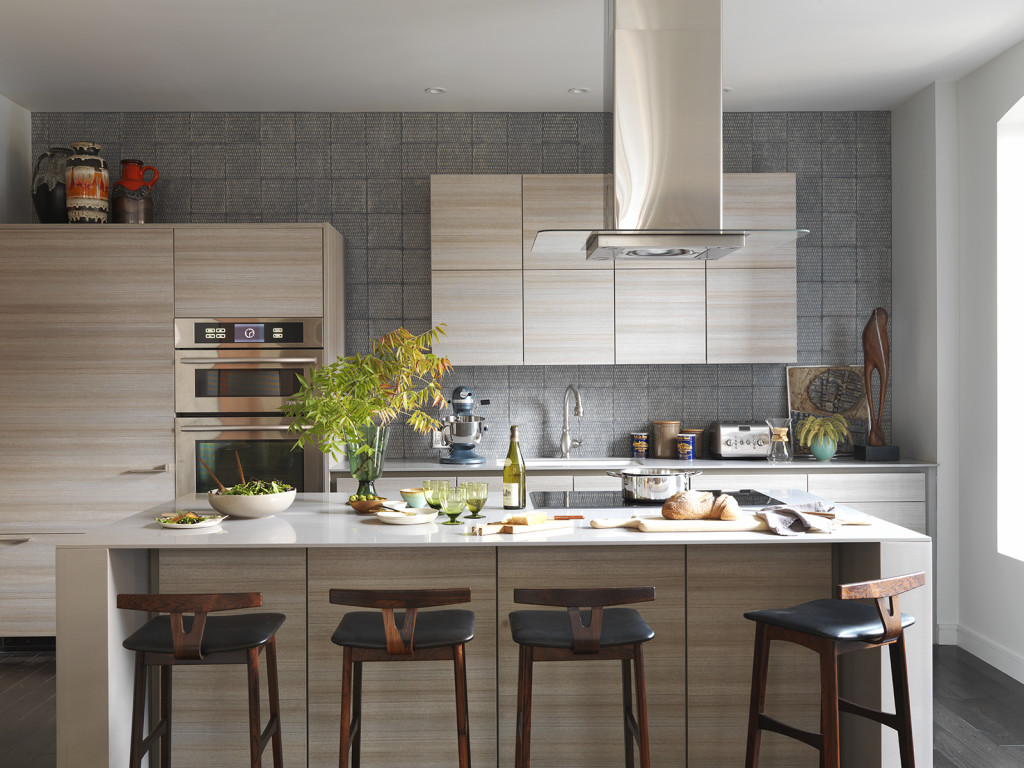 To be fair, there are already built-in "smart ovens" on the market. Justin Landman of House of Appliances in Delray Beach, Florida says, "Jenn-Air announced their wifi connected oven earlier this year. Dacor also offers a smart oven feature called Discovery IQ". The price tag on these starts at $3,600 for Jenn-Air and $4,400 for Dacor.
To be fair, there are already built-in "smart ovens" on the market. Justin Landman of House of Appliances in Delray Beach, Florida says, "Jenn-Air announced their wifi connected oven earlier this year. Dacor also offers a smart oven feature called Discovery IQ". The price tag on these starts at $3,600 for Jenn-Air and $4,400 for Dacor.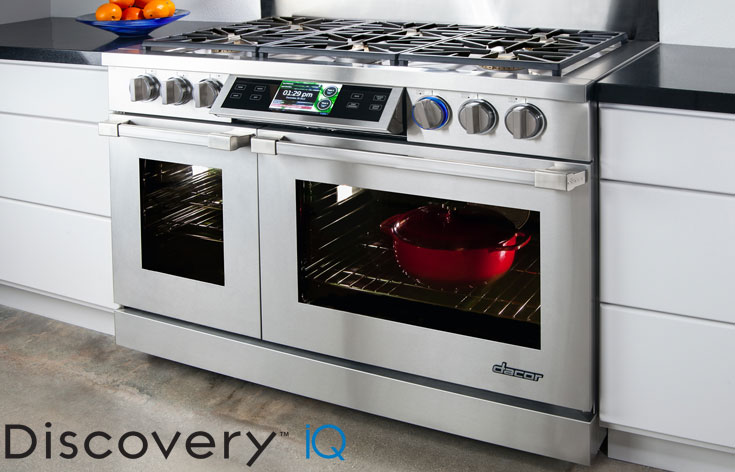 The new June oven will be available starting next spring for $1,495 but you can reserve one for $95 now. You'll just have to get over the loss of counter space.
The new June oven will be available starting next spring for $1,495 but you can reserve one for $95 now. You'll just have to get over the loss of counter space.
Maison & Objet Americas Debuts in Miami
If you can imagine Fashion Week for interior design, most likely it would resemble the trade show Maison & Objet Paris. Since 1995 brands have been debuting new collections and bringing fresh talent to the forefront at this biannual show. Now its success has spawned a new version, Maison & Objet Americas which was held at the Miami Beach Convention Center May 12-15.
Miami is at the crossroads between North and South America, both physically and culturally. In addition, as a home to Art Basel and the hugely successful Miami Design District, it is quickly becoming know as an art and design capital.
M&O America's Designer of the Year award went to Brazilian furniture designer Zanini de Zanine. His intense and very sculptural furniture design is influenced by the diverse culture he comes from as well as by his father, well known architect and designer José Zanine Caldas.
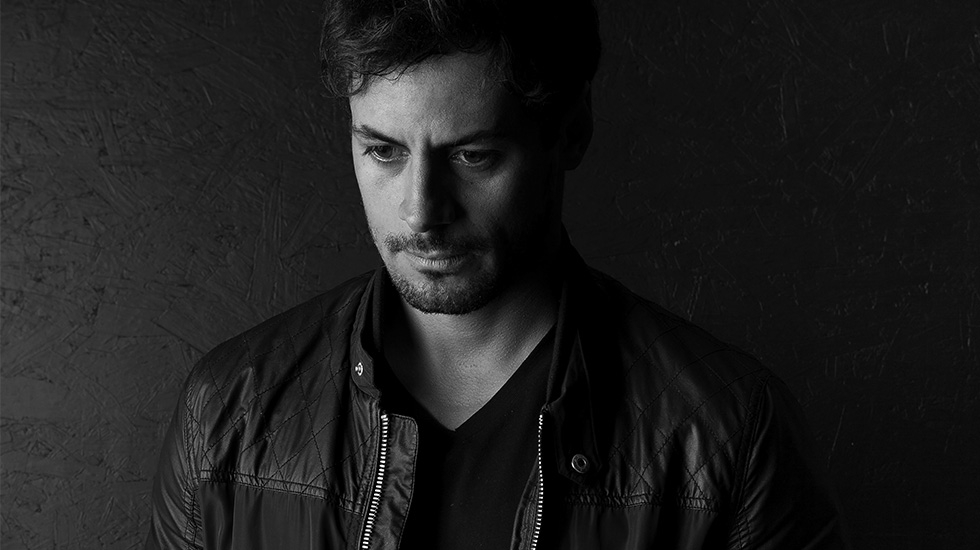 We spent the day at the Miami Beach Convention Center touring the booths at M&O Americas. Here are just a few of my favorite finds.
We spent the day at the Miami Beach Convention Center touring the booths at M&O Americas. Here are just a few of my favorite finds.

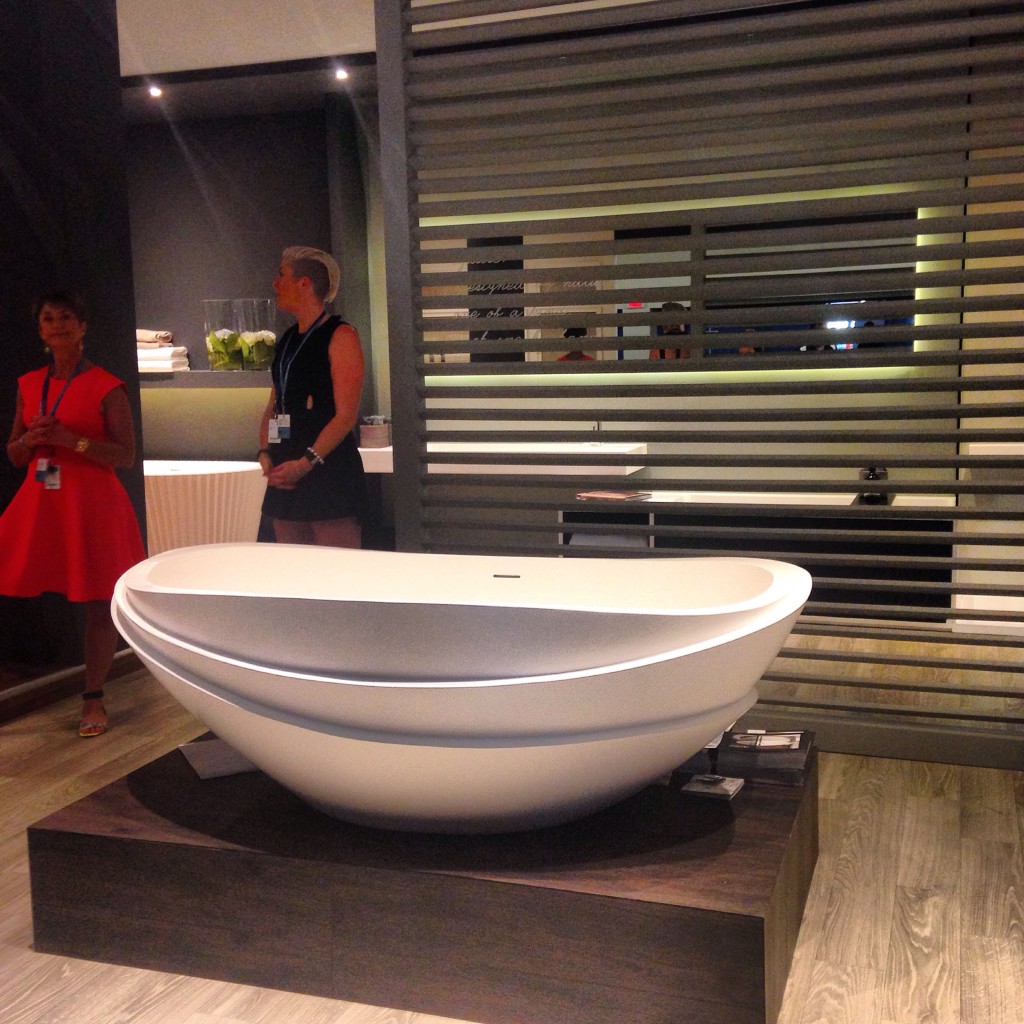
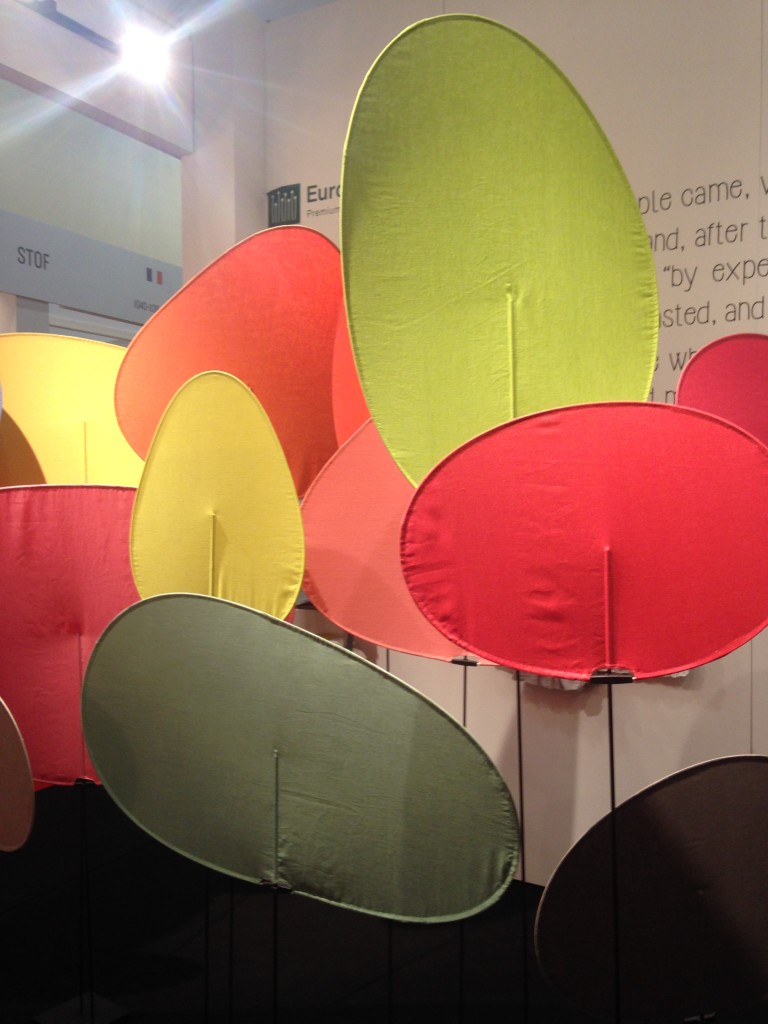

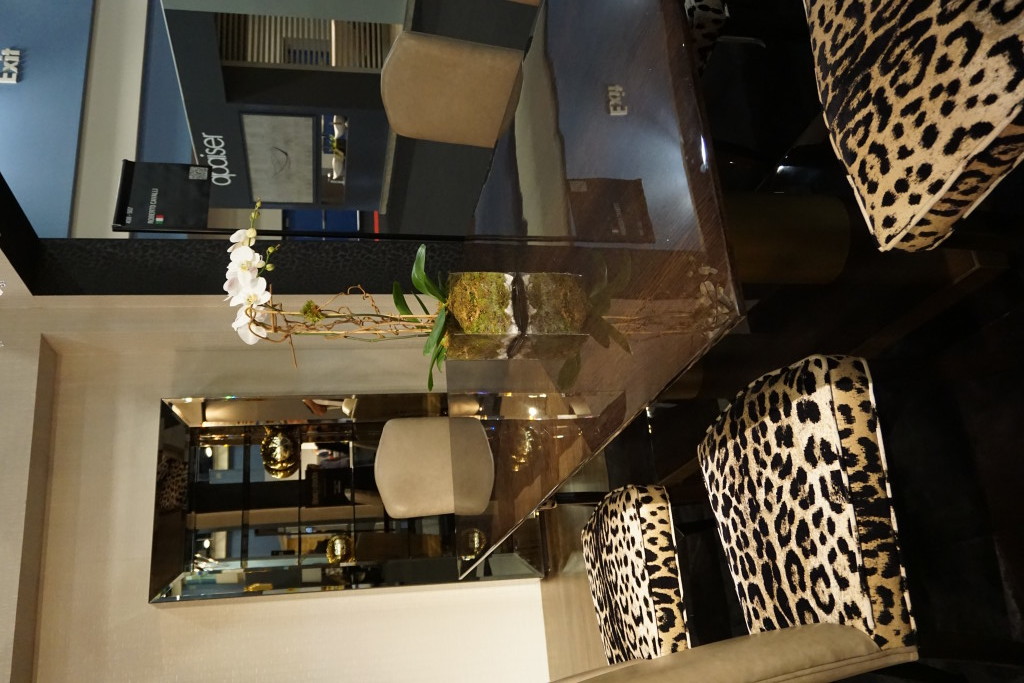


Not only did I enjoy perusing the creatively turned out booths and exhibits, I also enjoyed listening to the world renowned talented and accomplished architect, Paola Navone. She shared the stage with Cindy Allen, Editor in Chief of Interior Design Magazine.
I connected with Ms. Navone on so many levels as she was skillfully interviewed by Cindy Allen. Navone loves and is inspired by the sea, calling it "liquid color". Her creativity is driven by curiosity and she eschews perfection. In fact she says, "I promote imperfection". In the following video she differentiates artist and designer.
It was a great experience and I'm so glad I took the time out of my busy summer season schedule to attend. Sometimes you just need that mental break and all the better when it is creatively inspiring and thought provoking. For more about the show click here. Maison & Objet Americas will be back for round two in 2016, May 10-13.
Tile Tuesday: The Many Meanings of "Encaustic"
What is encaustic painting?As an artist, I love the sensuousness of working in the encaustic medium which I discovered in 2008. Encaustic painting involves beeswax, resin and pigments in varying combinations. They are mixed together and applied to a panel in layers which are fused with a torch or heat gun. This is where the name comes from. The Greek work “encaustikos” means to heat or burn.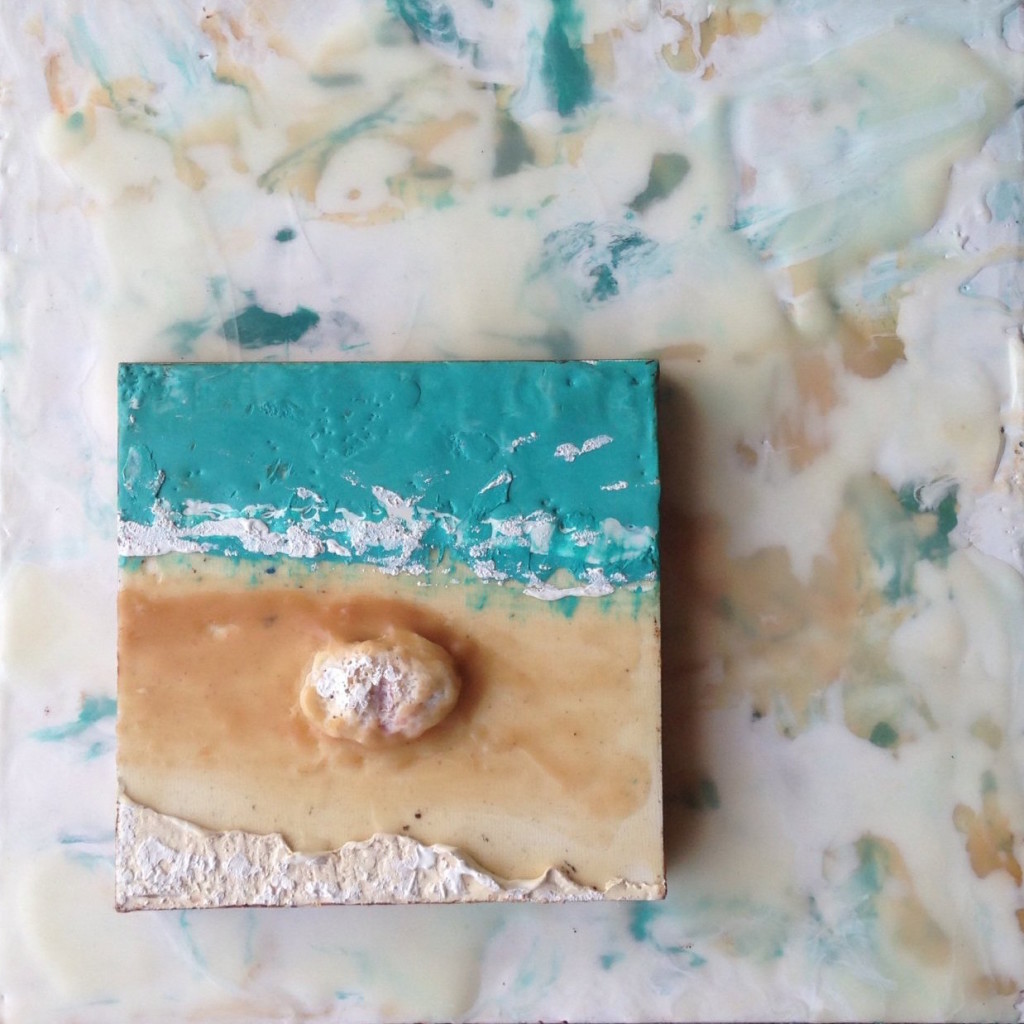 Encaustic painting predates oil painting and was used to create portraits on mummy casings dating back to 100BC in Egypt. These paintings are known as the "Fayum" portraits. Many have survived because beeswax is extremely stable so the pigments do not fade over time.
Encaustic painting predates oil painting and was used to create portraits on mummy casings dating back to 100BC in Egypt. These paintings are known as the "Fayum" portraits. Many have survived because beeswax is extremely stable so the pigments do not fade over time.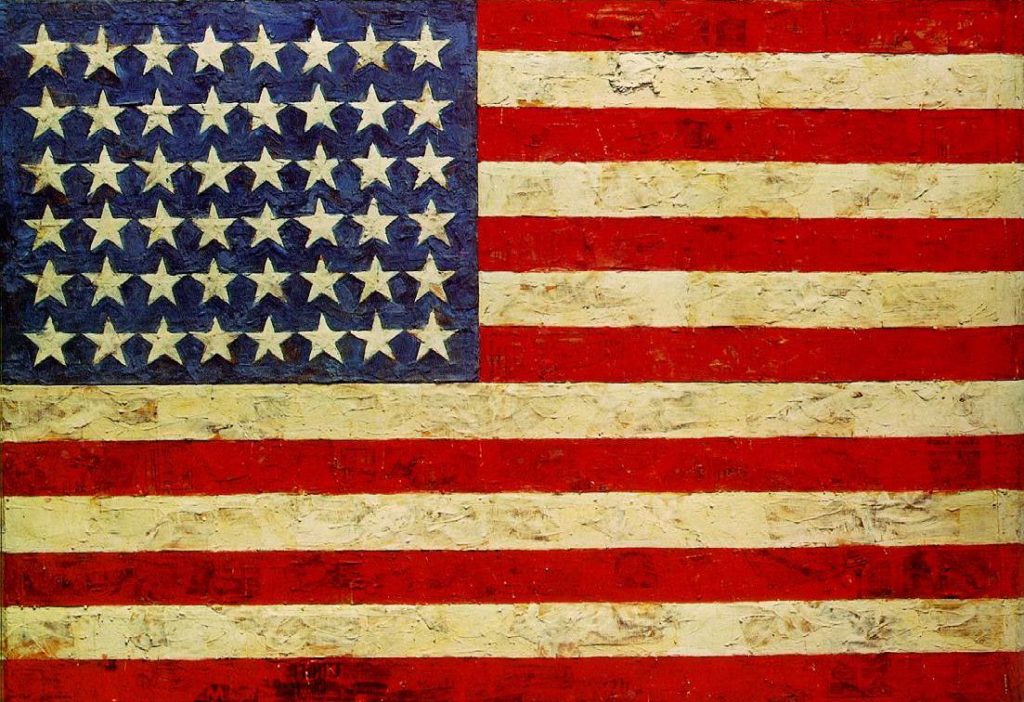 The technique fell into obscurity but was resurrected in the 1950s by artist Jasper Johns. You remember this painting, no? It’s an encaustic painting! Fast forward to the twenty first century and you will find more and more artists working with wax and incorporating it into their repetoire.
The technique fell into obscurity but was resurrected in the 1950s by artist Jasper Johns. You remember this painting, no? It’s an encaustic painting! Fast forward to the twenty first century and you will find more and more artists working with wax and incorporating it into their repetoire. 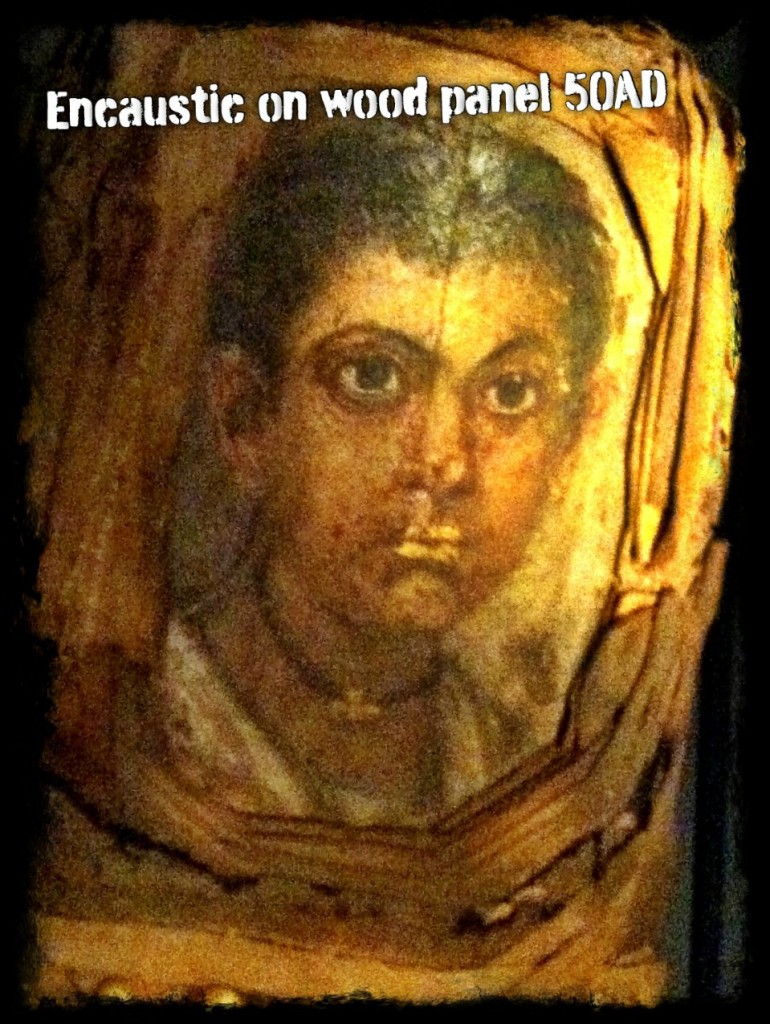 The Name GameIn the pursuit of all things tile, while on my trip to the Cevisama tile trade show with Tile Of Spain, I discovered something called “encaustic tile”. No one could actually tell me how it was connected to what I knew to be encaustic art so I decided to find out.
The Name GameIn the pursuit of all things tile, while on my trip to the Cevisama tile trade show with Tile Of Spain, I discovered something called “encaustic tile”. No one could actually tell me how it was connected to what I knew to be encaustic art so I decided to find out. 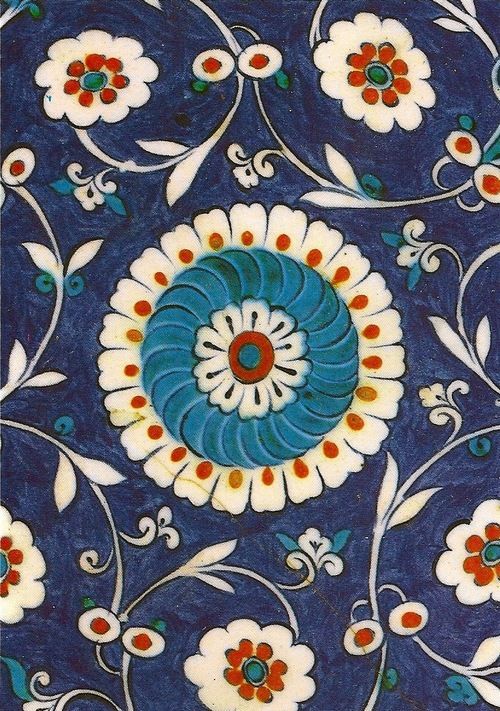 Guess what? There is no connection. Here’s what I discovered:Encaustic tile is also referred to as cement tile, inlaid tile and hydraulic tile. The name“encaustic” with reference to tile, comes from the nineteenth century. Turns out there is a third type of encaustic! It is also the name of a process of medieval enameling involving wax. Victorians thought that inlaid tile resembled this enamel work and began to refer to it as encaustic. The intricate patterns and designs of encaustic tile mimic the encaustic enameling process. It is a total misnomer but the name “Encaustic tile” stuck.
Guess what? There is no connection. Here’s what I discovered:Encaustic tile is also referred to as cement tile, inlaid tile and hydraulic tile. The name“encaustic” with reference to tile, comes from the nineteenth century. Turns out there is a third type of encaustic! It is also the name of a process of medieval enameling involving wax. Victorians thought that inlaid tile resembled this enamel work and began to refer to it as encaustic. The intricate patterns and designs of encaustic tile mimic the encaustic enameling process. It is a total misnomer but the name “Encaustic tile” stuck. 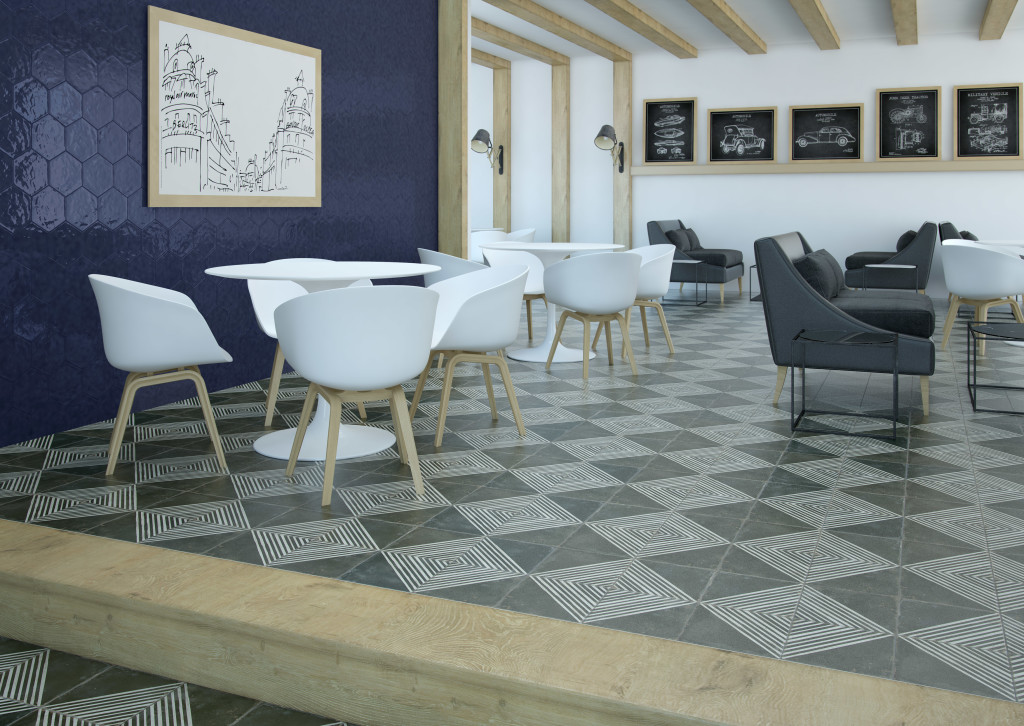 So what is encaustic tile?Cement tiles are not fired; there is no glaze layer on the surface of the tile. They derive their durability from the combination of finely dehydrated ground Portland cement layer and a more coarse layer of sand and cement. The pigment layer is hydraulically pressed into the surface and becomes a part of the tile. This merging of two layers creates the typically crisp clean patterns.
So what is encaustic tile?Cement tiles are not fired; there is no glaze layer on the surface of the tile. They derive their durability from the combination of finely dehydrated ground Portland cement layer and a more coarse layer of sand and cement. The pigment layer is hydraulically pressed into the surface and becomes a part of the tile. This merging of two layers creates the typically crisp clean patterns.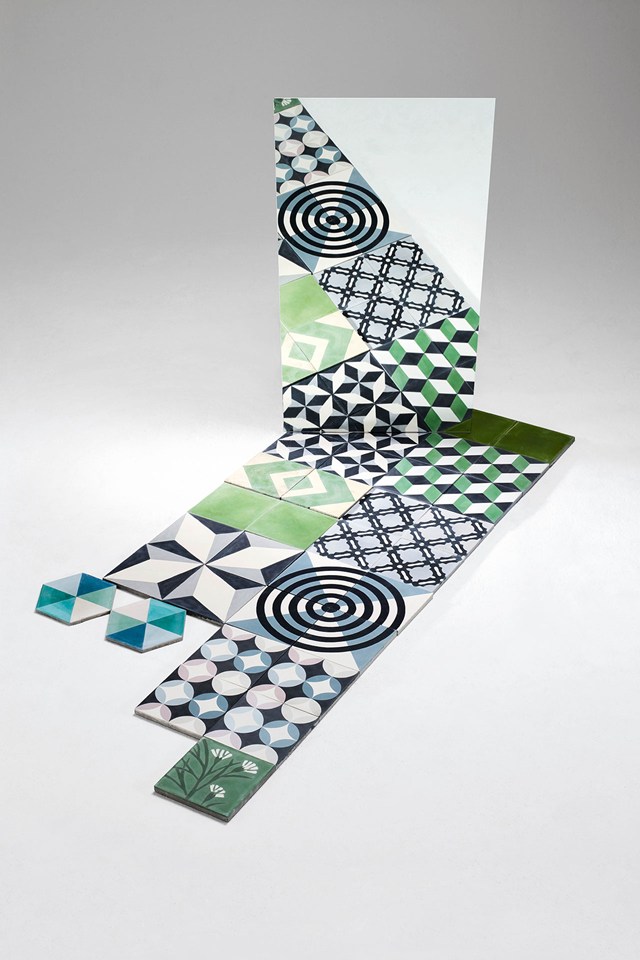 Originally these tiles were handmade but naturally today they are mass produced as described above. Encaustic, or cement tiles are known for their durability as floor tile and have lasted centuries. This explanation only scratches the surface as each country town and village in Italy, Spain, Mexico, Turkey etc. has its own history with the technique.
Originally these tiles were handmade but naturally today they are mass produced as described above. Encaustic, or cement tiles are known for their durability as floor tile and have lasted centuries. This explanation only scratches the surface as each country town and village in Italy, Spain, Mexico, Turkey etc. has its own history with the technique.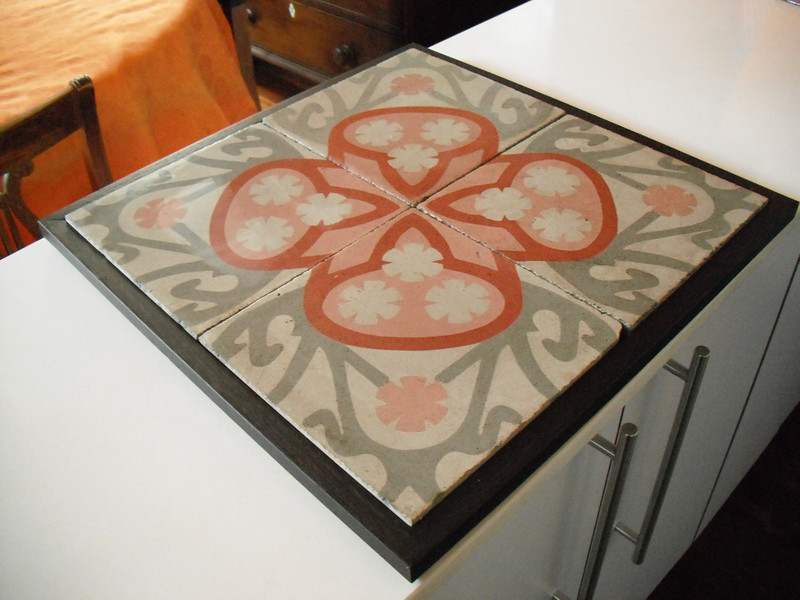 In my research I also came across the work of Benedicte Bodard. She lives in Barcelona where she salvages cement tile from dumpsters. With a little TLC ,she recreates them into furniture, wall hangings and more.So there you have it. If you have more info or would like to continue the conversation, email me or come by and visit on FaceBook.-------------------------------------------------------------------------------------------------------Update: Since posting this on Tuesday I have heard from designer Lundy Wilder of Villa Lagoon Tile. Not only is she an expert on cement tile, she even has a blog devoted to it! Here's what she had to add to the conversation: "Today's cement tiles are indeed still hand made all over the world. Ours are made in the Caribbean, Morocco, Vietnam, and Mexico. We have been to the factories (workshops is more fitting word) and know the owners well, all our cement tiles are made by hand.
In my research I also came across the work of Benedicte Bodard. She lives in Barcelona where she salvages cement tile from dumpsters. With a little TLC ,she recreates them into furniture, wall hangings and more.So there you have it. If you have more info or would like to continue the conversation, email me or come by and visit on FaceBook.-------------------------------------------------------------------------------------------------------Update: Since posting this on Tuesday I have heard from designer Lundy Wilder of Villa Lagoon Tile. Not only is she an expert on cement tile, she even has a blog devoted to it! Here's what she had to add to the conversation: "Today's cement tiles are indeed still hand made all over the world. Ours are made in the Caribbean, Morocco, Vietnam, and Mexico. We have been to the factories (workshops is more fitting word) and know the owners well, all our cement tiles are made by hand.
Kitchen Work Centers, the New "Triangle"
Whether you are a design professional or an educated homeowner you’ve probably heard the term “kitchen work triangle”. In fact it’s probably one of the first things you learn when endeavoring to create a new kitchen. Who thought this up? It is actually the result of a study made at the University of Illinois in the 1950s! If you’re wondering if it could be outdated, just think of how much kitchens have changed since then in terms of products, appliances and how we use them.The National Kitchen and Bath Association (NKBA) defines the kitchen “work triangle” an imaginary straight line drawn from the center of the sink, to the center of the cook top, to the center of the refrigerator and finally back to the sink.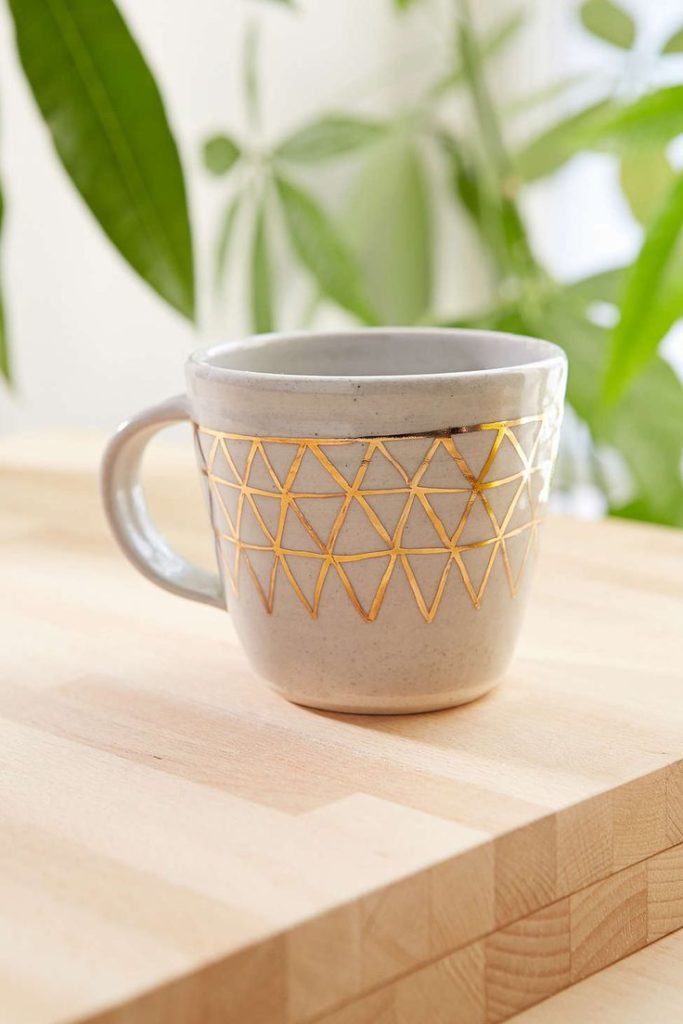 The NKBA suggests the following guidelines for determining a work triangle:- The sum of the work triangle's three sides should not exceed 26 ft. and each leg should measure between 4 ft. and 9 ft.
The NKBA suggests the following guidelines for determining a work triangle:- The sum of the work triangle's three sides should not exceed 26 ft. and each leg should measure between 4 ft. and 9 ft.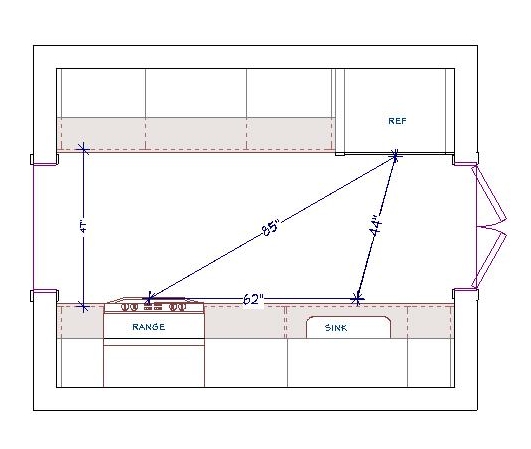 - The work triangle should not cut through an island or peninsula by more than 12 inches.- If the kitchen has only one sink, it should be placed between or across from the cooking surface, preparation area or refrigerator.Yes, this makes kitchen design sound a bit like solving a puzzle and, actually, it really is. I know my design is “right” when the layout works from every angle in terms of safety, ease of function and, of course, aesthetics.
- The work triangle should not cut through an island or peninsula by more than 12 inches.- If the kitchen has only one sink, it should be placed between or across from the cooking surface, preparation area or refrigerator.Yes, this makes kitchen design sound a bit like solving a puzzle and, actually, it really is. I know my design is “right” when the layout works from every angle in terms of safety, ease of function and, of course, aesthetics.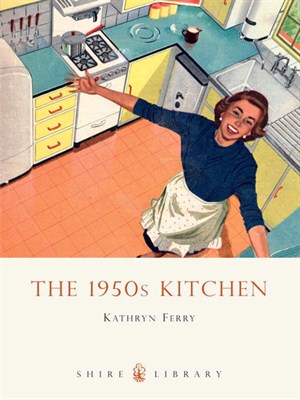 Some of the design solution is just good sound common sense but much of it should be directed by the individual needs of the client. I don’t “do” the triangle as a rule. Today we have multiple cook kitchens and no end of possible appliances. Modern kitchens are so unlike those of 60 years ago, so I use the more updated concept of “work centers”. The basic ones are food prep, cooking, clean up and storage.
Some of the design solution is just good sound common sense but much of it should be directed by the individual needs of the client. I don’t “do” the triangle as a rule. Today we have multiple cook kitchens and no end of possible appliances. Modern kitchens are so unlike those of 60 years ago, so I use the more updated concept of “work centers”. The basic ones are food prep, cooking, clean up and storage. 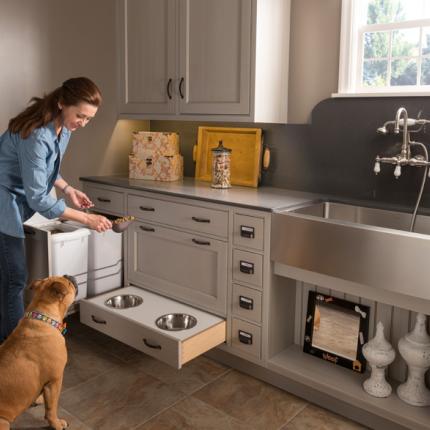 So while efficiency is still at the forefront, the thinking is a bit more evolved to address twenty first century needs.In a perfect world, work centers should be situated to allow someone to work in one area without getting in the way of someone using another. However, let’s face it, in a very small kitchen that is just not going to happen! The focus then is twofold: enough storage and enough counter space.
So while efficiency is still at the forefront, the thinking is a bit more evolved to address twenty first century needs.In a perfect world, work centers should be situated to allow someone to work in one area without getting in the way of someone using another. However, let’s face it, in a very small kitchen that is just not going to happen! The focus then is twofold: enough storage and enough counter space.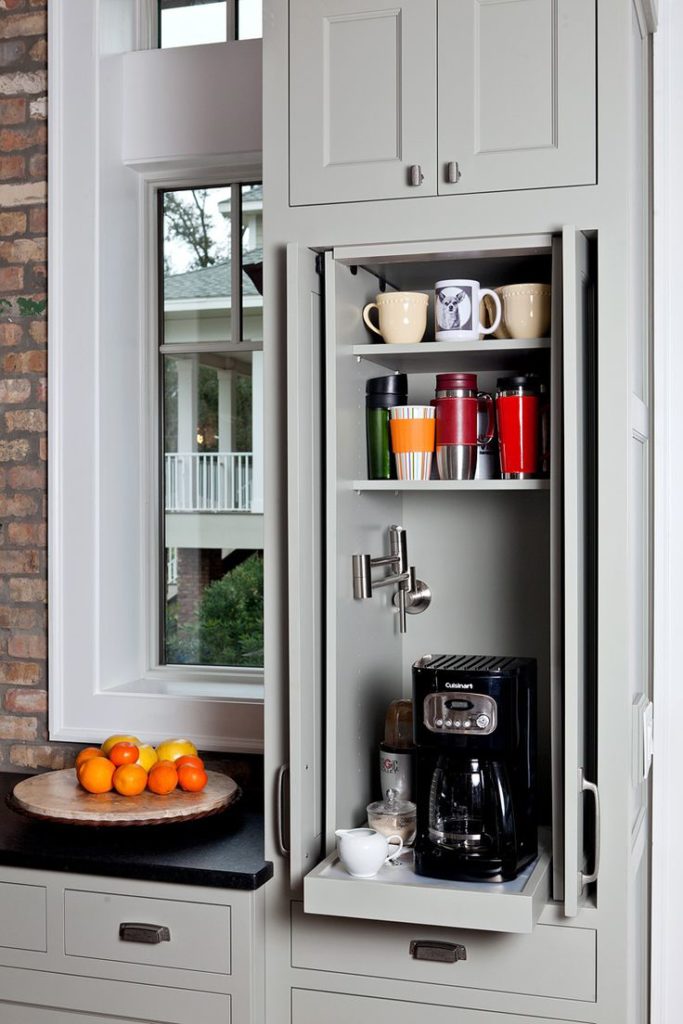 The types of work centers you can have is only limited by your imagination. Here are some good ones:-Beverage center- It can be coffee/tea, smoothies, wine or cocktails-Media center-It can be sit down area for menu planning, computer, charging station or TV-Baking center- You can trick this area out with customized storage for bake ware, bowls, utensils and a marble top for rolling dough.
The types of work centers you can have is only limited by your imagination. Here are some good ones:-Beverage center- It can be coffee/tea, smoothies, wine or cocktails-Media center-It can be sit down area for menu planning, computer, charging station or TV-Baking center- You can trick this area out with customized storage for bake ware, bowls, utensils and a marble top for rolling dough.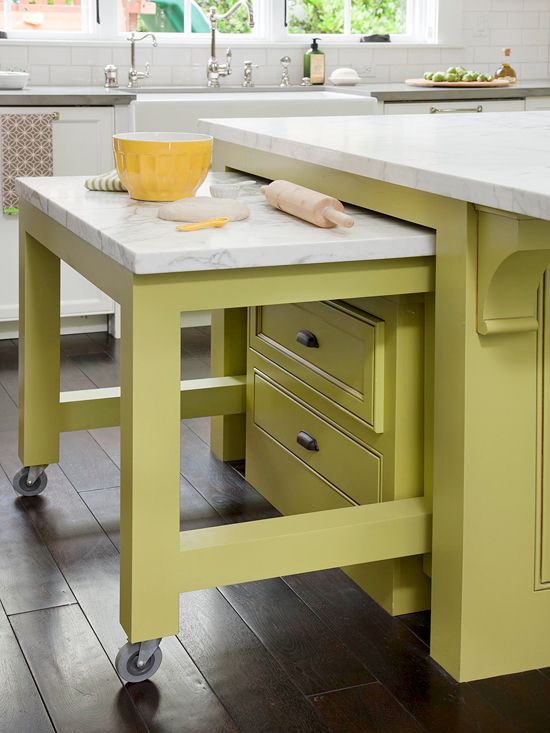 Remember that an “artful kitchen” employs what I call “practical creativity”. Function is the infrastructure, beauty comes next, the art is getting both just right.
Remember that an “artful kitchen” employs what I call “practical creativity”. Function is the infrastructure, beauty comes next, the art is getting both just right.
Everything You Wanted to Know About Tile: An Interview with Ryan Fasan
Before we get too crazy with the art here (I'm so sure we will!) I wanted to share some solid info about tile from the man who knows it best, Ryan Fasan. I had the pleasure of meeting "THE tile man" on my recent trip to the trade show Cevisama with Tile of Spain. Ryan is a professional consultant for all things tile related and also spoke this past week at the trade show Coverings in Orlando. Explaining and sharing his vision and understanding of ceramic tile is what he does best and he has graciously agreed to dish his knowledge here with us at Artful Kitchens. Take it away, Ryan! (For your viewing pleasure I am including some photos from some of the Spanish tile brands seen at Cevisama15)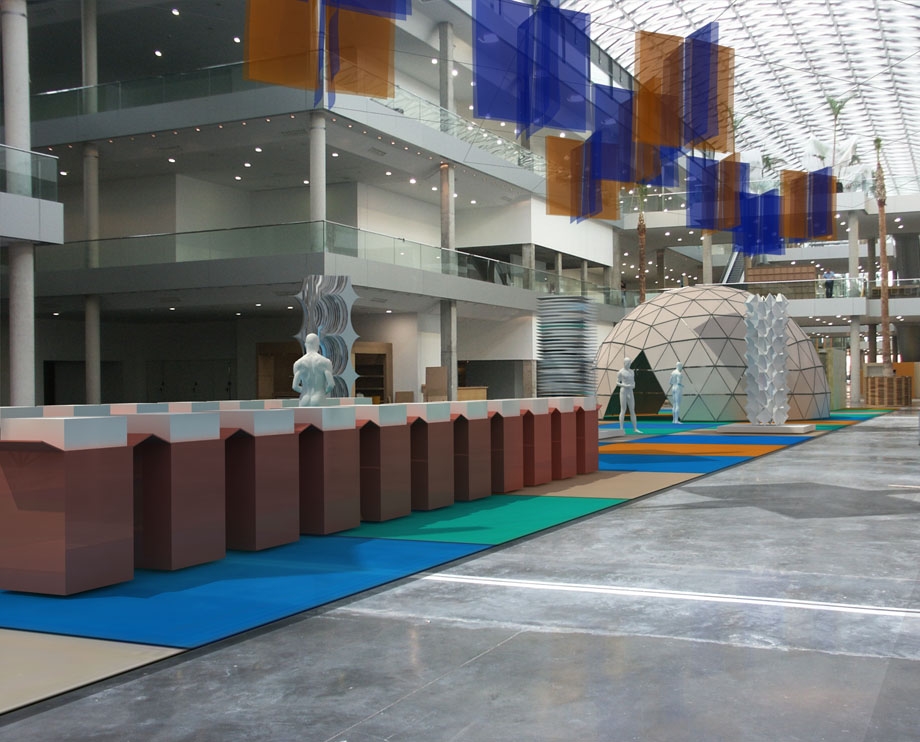 AK: What’s the difference between porcelain and ceramic tile? Ryan: Porcelain (who’s technical term is impervious tile) is a classification of ceramic tile. There are four types of tile, each classified by its water absorption capabilities. Impervious or porcelain tile happens to be the densest with a porosity of 0.5% or less. It is important to note that densest does not mean “best” in every application. The industry makes four types of tile for a reason and each type has an optimal area of use. When selected and installed properly any type of tile can last for decades if not centuries.AK: Is it true that porcelain tile is the same color all the way through?Ryan: Well there is "through-body" porcelain and colored body porcelain which is probably what you're referring to. Through-body is a heavy duty commercial product that is unglazed and extremely durable with very low water absorpbtion, usually around 0.01%In residential design you're more likely to encounter colored body porcelain which has some type of glaze. The body of the tile is then colored to match the glaze but the wear layer is still just in the glaze, so no, it's not "the same" all the way through.
AK: What’s the difference between porcelain and ceramic tile? Ryan: Porcelain (who’s technical term is impervious tile) is a classification of ceramic tile. There are four types of tile, each classified by its water absorption capabilities. Impervious or porcelain tile happens to be the densest with a porosity of 0.5% or less. It is important to note that densest does not mean “best” in every application. The industry makes four types of tile for a reason and each type has an optimal area of use. When selected and installed properly any type of tile can last for decades if not centuries.AK: Is it true that porcelain tile is the same color all the way through?Ryan: Well there is "through-body" porcelain and colored body porcelain which is probably what you're referring to. Through-body is a heavy duty commercial product that is unglazed and extremely durable with very low water absorpbtion, usually around 0.01%In residential design you're more likely to encounter colored body porcelain which has some type of glaze. The body of the tile is then colored to match the glaze but the wear layer is still just in the glaze, so no, it's not "the same" all the way through.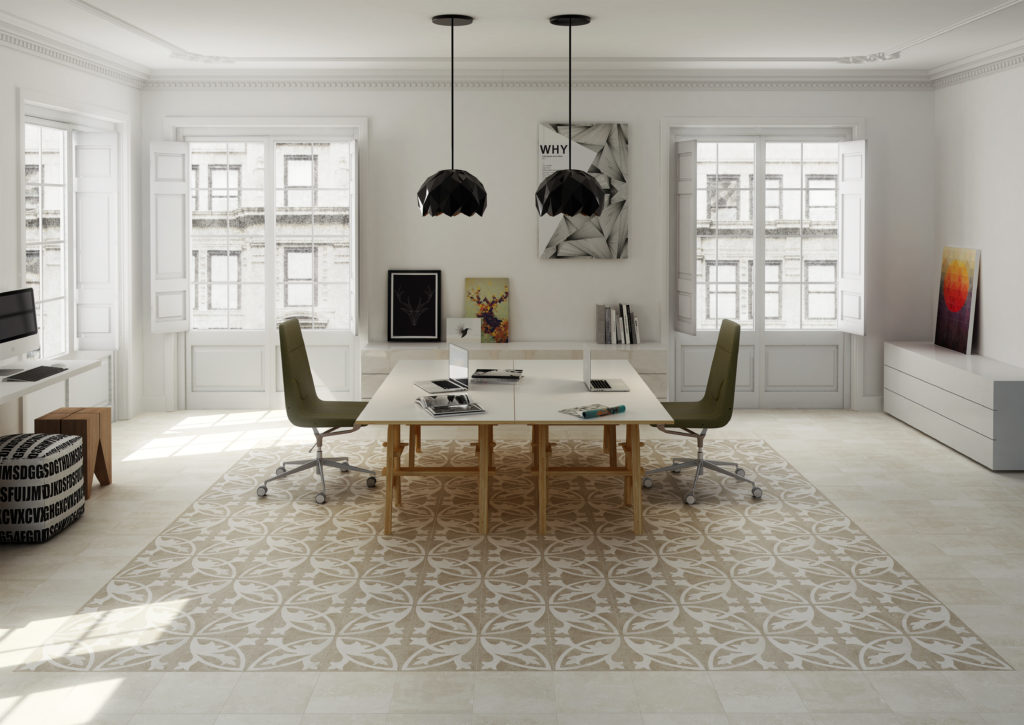 AK: Do I have to use grout?Ryan: Even though this is often the wording used, the real question is do I have to leave a joint or can I just put the tile tightly together (called a butt-joint)? The answer is yes, you do have to have a joint. Our buildings are not as solid or perfect as we often think they are. Joints allow for natural expansion and contraction.AK: I know that all tile is made of white or red clay. Is one better than the other?Ryan: Absolutely not! A good factory will make quality tile from any color of clay. Often the most cost-effective and environmentally responsible decision is to use whatever color of clay is locally available and modify it as required. Price is most likely dictated by the proximity of the clay source.
AK: Do I have to use grout?Ryan: Even though this is often the wording used, the real question is do I have to leave a joint or can I just put the tile tightly together (called a butt-joint)? The answer is yes, you do have to have a joint. Our buildings are not as solid or perfect as we often think they are. Joints allow for natural expansion and contraction.AK: I know that all tile is made of white or red clay. Is one better than the other?Ryan: Absolutely not! A good factory will make quality tile from any color of clay. Often the most cost-effective and environmentally responsible decision is to use whatever color of clay is locally available and modify it as required. Price is most likely dictated by the proximity of the clay source.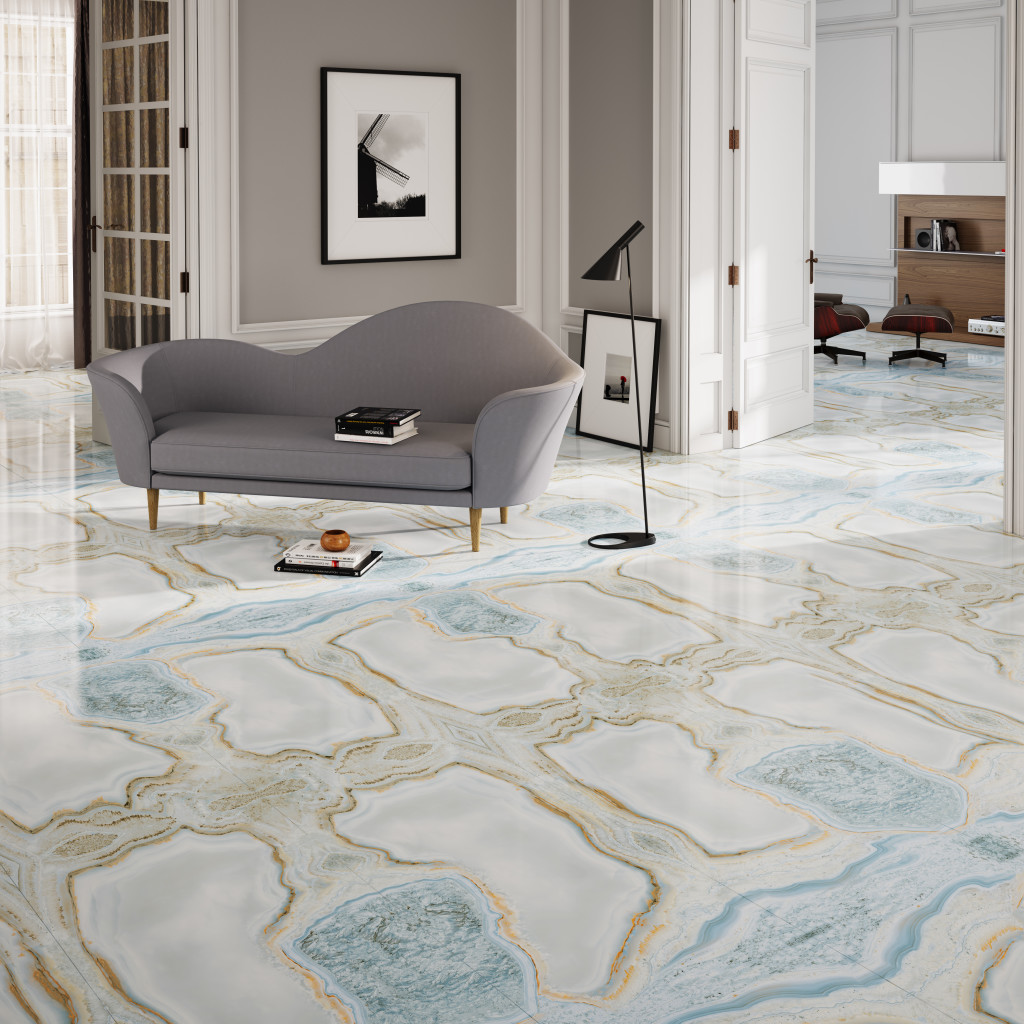 AK: What benefits are there to “rectified” tile?Ryan: Rectification is the cutting grinding of all 4 sides of the fired tile to ensure that all sides are square and the entire surface area is flat. By removing the sides, we get rid of the characteristic “pillow” in a ceramic which makes for much more realistic stone or wood reproductions. This can allow for a joint as small as 1/16"! However remember to ask if a tile is mono-calibre before specifying that small of a joint.
AK: What benefits are there to “rectified” tile?Ryan: Rectification is the cutting grinding of all 4 sides of the fired tile to ensure that all sides are square and the entire surface area is flat. By removing the sides, we get rid of the characteristic “pillow” in a ceramic which makes for much more realistic stone or wood reproductions. This can allow for a joint as small as 1/16"! However remember to ask if a tile is mono-calibre before specifying that small of a joint.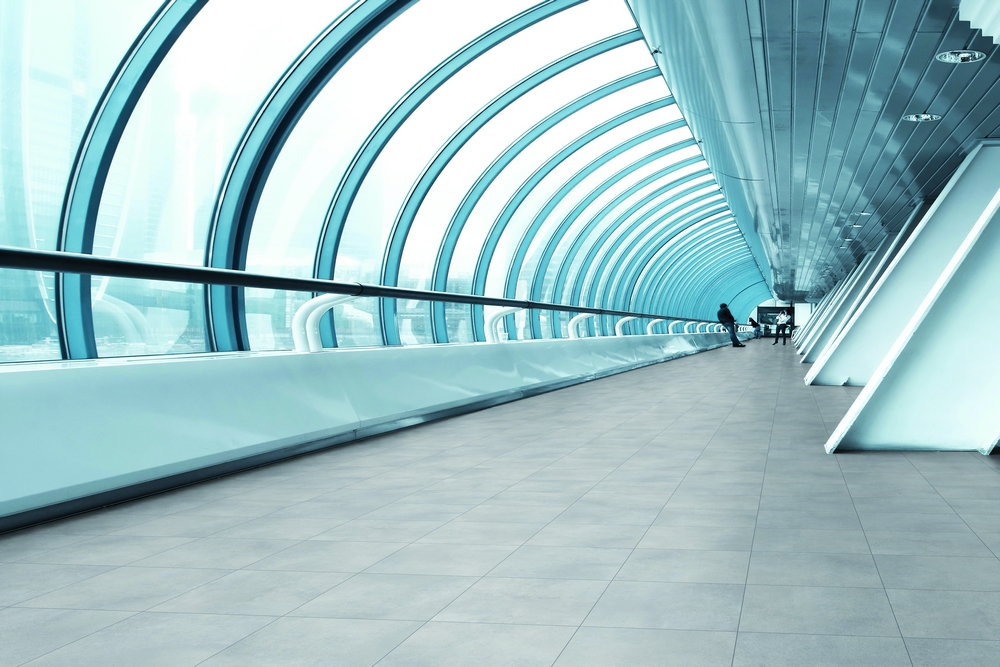 Wow! Just think how knowledgeable you are going to be next time you go tile shopping! Thanks again to Ryan for taking the time to answer my probing tile questions.Continue the conversation on FaceBook. Is there something more you'd like to know about tile or a fact that you'd like to share?
Wow! Just think how knowledgeable you are going to be next time you go tile shopping! Thanks again to Ryan for taking the time to answer my probing tile questions.Continue the conversation on FaceBook. Is there something more you'd like to know about tile or a fact that you'd like to share?


